Baseball Outfield - Learning the Basics
Teaching Baseball Outfield,Positioning and how to play the position is an extensive task for any coach. There’s a whole lot more to the positions than just catching a fly ball or chasing down a grounder in the gap.
The Outfield can feel like you’re in the middle of the Sahara Desert, hot and lonely, if you don’t have any idea of how to play the position, and it doesn’t matter whether it’s Left, Center or Right field, it can be intimidating.
You’re about to learn a lot of basics and a lot of tricks of the trade, so, as they say, “Let’s Begin at the beginning.”

Baseball Outfield - Lonely Place
As purely elementary let’s begin with, there are three outfield areas known as Right Field, Center Field and Left Field, which 3 different players play. There are traditional qualities each of the fielders should possess, somewhat different for each, but we’ll get into that a bit later.
The very first lesson to learn is which field you‘re assigned and where to initially position yourself, which is no small task as you’ll see.
Basically outfielders will normally stand @ half way distance between the infield and the fence, or end of the outfield. This middle of the road position offers the player the greatest ability to reach balls hit out of the infield, whether it be a fly ball or a ground ball.
As players mature they will develop their own style of playing their position, meaning most players will feel more comfortable and confident in their skill to run in to catch a ball, therefore they will play a normal deep position, but by the same token other players will be comfortable with their ability to runs backwards and track balls down hit over their heads, therefore they will play a normal shallow position.
One must remember, no matter how confident or natural it feels running back on a fly ball …It’s Always easier to come in ... than go out.
As your skill level and age increases factors such as the batter’s tendencies of how he hits, strict pull hitter or sprays the ball around, how your pitcher is going to work the hitter, it’s difficult to hit an inside pitch to the opposite field, will also influence where you position yourself in the field.
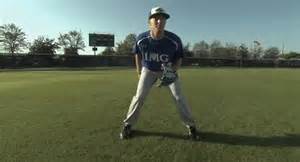
Baseball Outfield - Getting Ready
How to Catching a Fly Ball: Baseball Outfield
Most everyone has fond memories of their childhood, but the Tee-Ball days of watching butterflies dart about or gazing at another game while playing the outfield are over. Get used to it. You’re now learning how to play like a professional ball player.
You’ll hear me repeat this throughout the website, in various ways, but it bears true every time and requires memorizing. “ The Spectators at a Baseball Game sit in the bleachers … there are None on the Baseball Field.”
Therefore, your first lesson in playing your position is always be watching the action of the game, never turn your back on the infield, and keep your eyes focused on who has the baseball, because that’s where the action will be.
That might bear repeating. Nothing can happen on the field without it being directly affected by the baseball. The baseball dictates whether a runner can advance, is it a fair hit, is it caught, everything in one way or another revolves around the baseball. Therefore, it only makes sense that you’d always want to know where the baseball is.
Playing Your Position ---------Baseball Outfield
No different than infielders, who have a basic starting fielding position, of bent knees, head up, glove down, outfielders also require a good basic starting fielding position, as well as a good mental assessment of the field. Let’s learn how to play and analyze our position.
Step One: Baseball Outfield
For the most part little league baseball parks are community or league owned and maintained by volunteers, who do the best they can with limited resources, but the issue is … You’re Not playing on a professional ball diamond, therefore there will be imperfections on the field, especially the outfield.
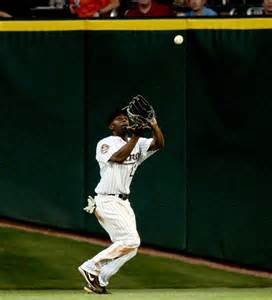
Baseball Outfield - Two Hands
A. Scan the entire area you will be playing plus half of the adjacent field. In other words, if You’re playing right field … scan right field and right center field, because a ball hit into the right center field gap is as much your responsibility as it is the center fielder’s.
You’re looking for any noticeable issues which could cause you a problem fielding a ball, such as:
(a.) Dips in the field where perhaps a long buried pipe created a slight sinking of a four or five foot area, which could cause you to break stride while chasing a fly ball, slowing you down.
(b,) Patches of tall or particularly thick low growing weeds, which could drastically slow a ball down, which you realize you’ll have to charge the ball because it won’t come to you.
(c.) Always check the foul lines. Is the field enclosed by fencing or is it wide open into the parking lot. This could determine how you’ll play a ball.
Tip: It’s a proven fact the human eye focuses more clearly when looking through an enclosure of some sort, which restricts peripheral vision and the distractions it picks up.
Cup your hands on either side of your face creating blinders as you scan the field, as it will help detect things you would normally scan right over. Don’t worry about someone thinking you look silly, you’re there to win a ball game and anything you can do to give yourself an advantage is all you think about.
Step Two: Baseball Outfield
You’re aware of your area, you’ve warmed up playing long toss with the other outfielder the game is beginning and you go into your fielding position. What fielding position?
A. While waiting for the pitcher to prepare himself it is customary to either stand or be bent over with your hands resting on your knees, while you watch the actions of the pitcher.
B. When the pitcher makes contact with the rubber, you may not be able to see the pitching rubber, but you’ll know by the pitcher’s windup, you will change body position. If you were standing erect, you’ll quickly bend forward. If bent over on your knees, you’ll immediately raise your upper body and remove your hands from the knees, slight hop or shuffle preparing to instantly move in one direction or the other where the ball is hit.
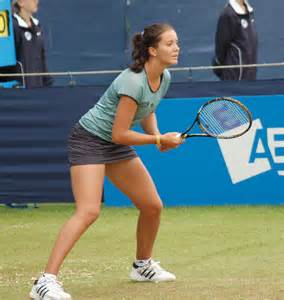
Baseball Outfield - Ready To Move
The movement of the feet is extremely important in helping you to explode out of your stance with no hesitation. When the feet are in motion the time it takes for your brain to tell you to move your feet is eliminated, because the feet are already moving, thus your initial move to the ball will be quicker.
Question this strategy? An excellent example of this foot movement strategy is utilized in players playing tennis. As the player serving the ball begins their serving motion the person who is going to receive the serve quickly moves their feet, either side to side or up and down taking small stutter steps. The reasoning is simple, movement to intercept the serve, (tennis ball) which is traveling 100 mph angling away to your side, must be instantaneous. The feet must be already moving
I know you’re not chasing a tennis ball, but the same strategy holds true when you’re trying to rundown and catch a high fly baseball hit 380 feet, every split second counts enormously.
Step Three: Baseball Outfield
Watch the pitch all the way to the plate, as it is imperative you see the ball come off the bat as everything you do after that is decided by the flight of the ball.
In addition to visually seeing the baseball don‘t forget to use your hearing as well ….
(a.) Listen to the sound the bat makes when making contact with the ball and you’ll immediately be able to tell how hard the ball was hit.
I hesitated to include this tip because unfortunately the modern day composite and metal bats disguise much of this information, but wooden bats offer a distinct sound difference between the ball being hit solidly or not and since knowledge is never lost, it may be pertinent again one day.
(b.) Notice the movements of the hitter. Was the swing a smooth well balanced stroke, or was the hitter fooled and obviously off balance hitting the ball off his front foot. This is a good indicator of how far the ball will travel.
Step Four The old saying “what ever goes up … has to come down” could have been intended for a baseball fly ball, because that is exactly what you’ll be gauging as you watch the flight of the ball and position yourself to make the catch.
The Secret to Catching a Fly Ball is Simple: Watch the ARC of the ball in flight.
Meaning what?
When initial contact between bat and ball is made, whether coming off the sweet spot or off the handle, energy pushes the ball up and away from the plate.
As the energy pushing the ball diminishes, the ball begins to lose momentum, slowing the ball until all the energy is gone. It’s at this point gravity takes over and the ball begin to come down.
This is what’s referred to as the ARC of the ball and by learning to read this arc you will be able to gauge where the ball will land, and of course your job is to be there when it does in order to catch it before it hits the ground.
You’ll see players catch the ball slightly off to one side and that’s not an accident. It’s easier to see the arc of the ball if viewing it from the side, at a slight angel, although that’s not always possible, thus the slight angle of the player making the catch.
Step Five: Baseball Outfield
If learning how to see and gauge the arc of the ball is the key to catching fly balls, line drive balls hit Directly at you must be the hardest ball to catch because there’s No Arc to see, not noticeable enough for the outfielder anyway.
For the most part, it‘ll take you a split second to analyze how hard the ball was hit, thus how far it‘ll most likely travel. This slight hesitation can be devastating to your chances of catching the ball, and although experience will help you minimize hesitation, you’ll still see major league players miscalculate and have balls hit over head.
Due to the difficulty involved, I always taught my players your first instinct when a fly ball is hit directly at you is to take a quick small step backwards. As you turn slightly in the direction the ball is hit this will give you a split second to gauge where and how far the ball is going.
If you guess wrong and you have to reverse direction and come in to catch the ball, running in is easier than running backwards for 98% of players. Plus, if the ball drops in front of you, the hitter has a base hit. If you had started in or froze, the ball, which will get to you in a hurry, may travel over your head and now the hitter has at least a double, but more than likely a triple or even an inside the park home run.

Baseball Outfield - More Detailed Arc
Your primary goal and job is to catch the ball for an out, but obviously that is not always going to happen, so your job changes to keep the hit and the damage to the minimum. It goes without saying scoring from first base is a lot harder than scoring from third. Sometimes giving in a little is the smart baseball play.
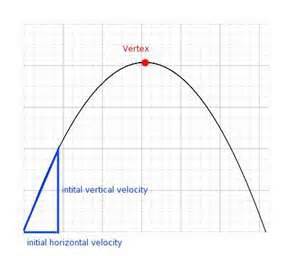
Baseball Outfield - Arc of Ball Flight
Step Six: Throwing ------- Baseball Outfield
Whether you realize it or not, you've already learned a Whole Lot about how to play the outfield, but as with all smart ball players, Mental Preparation is a large part of playing your position. Let’s learn how through an example.
You’re playing right field and you know the runner on second base has average to sub-par speed. How do you know this? Because you watched him run to first when he hit the ball, then you watched him run to second on a passed ball. (always be watching, looking and learning)
You pre-program and know you’ll try to throw the runner out at third if the ball’s hit to you. How do you know the runner will be tagging and will try to advance to third base after the catch? You don’t. However, you Always assume this is the case, thus eliminating any hesitation or delay of getting the ball back into the infield.
(1.) The batter lifts a high fly ball into normal depth right field, which you’ll come in and over one or two steps to track the flight of the ball.
(2.) As you wait for the ball to come down, position yourself to where you’ll have to move slightly forward in order to catch the ball, one step, two at the most, as by doing this you are moving toward the base you’re going to throw to, which will give you more momentum, thus a stronger throw.
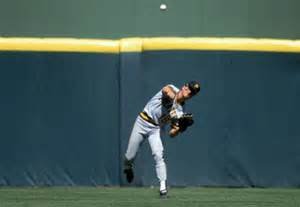
Baseball Outfield - Directly Over Hand
(3.) As you catch the ball two handed and while moving forward, retrieve the ball from the glove in a 4 seam grip and throw directly overhand, because with this grip and the natural sinking action of an overhand throw, you will virtually eliminate an overthrow because the ball will not sail due to the natural sinking action.
This sinking action also helps the ball bounce straight, so if your throw doesn’t make it all the way to the infielder on a fly, the bounce will go directly to him.
A one bounce throw is usually every bit as easy to catch as a fly and the ball does not lose any velocity. In fact there are times the skid will increase the speed of the ball, as for instance on wet grass.
You’ve been exposed to a lot of information. Reflect, digest put it into use and you’ll quickly become a skillful outfielder.
Baseball Outfield to Outfield Fielding
Baseball Coaching Outfield Drills
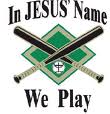
New! Comments
Have your say about what you just read! Leave me a comment in the box below.